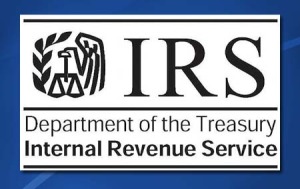To Profit or Not-for-Profit; What Truly is 501(c)(3)?
With the number of teams/gyms out there, and with parents seeing the benefit of organizing a booster club for the benefit of raising funds, this is often a question asked – should we be “for profit” or “not for profit”? I can tell you that even in forming our personal business, my business partner and I discussed if we wanted to be a for-profit or not. It is a valid sort of thing for some businesses/organizations. A booster club it is the first thing to consider.
 All of the information you need to make an educated decision is on www.irs.gov. You can search “501c3” and it will give you everything that you need to start your venture into the world of tax law. Warning – it is boring as heck!!! Legal speak is never exciting, and it is also full of words that one hardly uses in day to day conversation. Unfortunately it is important to eliminate confusion in how the laws are written and what they mean and why. I decided to dive into the world of 501(c)(3) and comb through the information provided by the IRS and try to give the abridged version so that this article can be a step in organizational decision making whether to become a 501(c)(3) or not. Hey – I love to help out; that’s how I roll.
All of the information you need to make an educated decision is on www.irs.gov. You can search “501c3” and it will give you everything that you need to start your venture into the world of tax law. Warning – it is boring as heck!!! Legal speak is never exciting, and it is also full of words that one hardly uses in day to day conversation. Unfortunately it is important to eliminate confusion in how the laws are written and what they mean and why. I decided to dive into the world of 501(c)(3) and comb through the information provided by the IRS and try to give the abridged version so that this article can be a step in organizational decision making whether to become a 501(c)(3) or not. Hey – I love to help out; that’s how I roll.
My first stop in all of this was to visit www.irs.gov and to search “501c3”. What came up was a wealth of information explaining what a 501c3 was, eligibility, why apply for one, and all of the different statuses and classifications for tax-exempt status. I decided to start with “Applying for a 501c3 Tax-Exempt Status”, a publication that explains all you could basically ask about becoming a 501c3 organization. The main reasons that most choose to become 501c3 status are that your organization becomes exempt from federal income tax and eligibility to receive tax-deductible charitable contributions. Let’s face it – it is so much easier to go to a business and ask for an “in-kind” donation (a donation with no strings attached and nothing given other than the donation) if you can tell them that they can deduct it on their income taxes than not. But you can’t just “decide” that you are going to be a 501c3 organization; you need to apply for the status. There are parameters that an organization must fall into in order to be a 501c3. Your organization must be “organized” (have an EIN, be an LLC, INC, or other appropriate corporation filing, have bylaws and officers), and provide proof of this with your application. There are some rather tedious things that need to be done, but they are not hard and worth it in the end.
In the document there is a section that spells out who is eligible for 501c3 status. Now, if your booster club is going to donate to a political candidate, you will NOT be able to claim 501c3 status; this is a non-political organization status. 501c3 is more for churches and educational groups – including youth sports. That is why most booster clubs (if they choose to be not-for-profit) are indicated as this status. The club needs to meet (at minimum the officers) and structure the booster club entity. Bylaws need to be created (there is a list of rules for running meetings called “Robert’s Rules” – this will help with meeting structure and what you should be documenting with your meeting notes and agendas). If you Google “Booster Club Bylaws” you will get some good templates for  bylaws to utilize. Of course you will need to specify for YOUR organization, but it helps to have a guide. Our booster club did that and truly spelled out who is qualified to be a member of the booster club, who can attend the meetings, and what qualifies as a “valid meeting” and how can the bylaws be changed. The IRS will want this information so that they know that it is not a “shell” for a for-profit business. In structuring your booster club, you will also want to make sure that there are no connections with the “for-profit” business – you wouldn’t want the business owner or gym director as an officer, or even a member of the club. If coaches are members they can only be so as parents of athletes in the gym – not as employees of the gym. An accountant or tax attorney will be able to explain the specifics of this.
bylaws to utilize. Of course you will need to specify for YOUR organization, but it helps to have a guide. Our booster club did that and truly spelled out who is qualified to be a member of the booster club, who can attend the meetings, and what qualifies as a “valid meeting” and how can the bylaws be changed. The IRS will want this information so that they know that it is not a “shell” for a for-profit business. In structuring your booster club, you will also want to make sure that there are no connections with the “for-profit” business – you wouldn’t want the business owner or gym director as an officer, or even a member of the club. If coaches are members they can only be so as parents of athletes in the gym – not as employees of the gym. An accountant or tax attorney will be able to explain the specifics of this.
When you become a 501c3 recordkeeping becomes a priority! You will have to have records that spell out ALL club activity. Having a treasurer as an officer is an excellent idea – and have the person be someone that is very detailed-oriented and good with money. It is also recommended that for check-writing, you require 2 signatures for the check to be valid. This protects the club and the treasurer themselves from accusations of impropriety (stealing money). You will also have to file annual reports for your organization, and the treasurer will be instrumental in this process. Your organization must also keep all agendas and meeting minutes for the meetings held each year. That is where it is important to have a secretary as one of the officers as well. The President and Vice President are responsible for the organization and management of the organization itself, and should always be made aware of all areas of the organization, as they are just as culpable as the other officers. Which officer positions that are involved in the organization are up to the organization itself and should be chosen by what responsibilities are solely the officers’. An example is that our booster club has a President, a Vice President, a Secretary and a Treasurer, but there are other organizations that also have fundraiser coordinators, and still others that have public-relations officers. Each booster club will be unique to its needs.
 A great aspect to look at is “When to File for 501c3 Status”. The IRS recommends filing by the end of the 27th month after the organization is legally formed. This date is when the articles of incorporation are filed with the state. Any organization that is not a private one is not required to file an application unless the organization makes more than $5,000.00 in one tax year, and should file the application within 90 days of the end of the tax year that it exceeds the stated threshold of $5,000.00.
A great aspect to look at is “When to File for 501c3 Status”. The IRS recommends filing by the end of the 27th month after the organization is legally formed. This date is when the articles of incorporation are filed with the state. Any organization that is not a private one is not required to file an application unless the organization makes more than $5,000.00 in one tax year, and should file the application within 90 days of the end of the tax year that it exceeds the stated threshold of $5,000.00.
It is recommended that the organization has access to a CPA or a tax attorney for questions, review of recordkeeping and financial records, and for questions pertaining to what an organization must do. There are many different requirements for an organization to maintain its 501c3 status, and any violation of these requirements – no matter how small – can result in the loss of the 501c3 status. This is the reason that having access to a CPA or a tax attorney is so important.
www.irs.gov is a wonderful resource and a place that you will want to become familiar with in forming your booster club. Having access to a booster club is a huge blessing with helping out families with the costs of participating in cheerleading of any kind, but it is important for organizations to make sure they know HOW they can and can’t help out and what they need to do to operate within the letter of the law. Visit this site to get all of your information and then find yourself someone that you can personally ask the questions of to understand when to do certain things and how to do them so everything is legal and correct. Good luck to you and happy fundraising!!
http://www.heartofcheer.com/news/profit-profit-truly-501c3/http://www.heartofcheer.com/wp-content/uploads/2014/10/tax2.jpghttp://www.heartofcheer.com/wp-content/uploads/2014/10/tax2-150x150.jpgBlogCheerleadersCoachesEducationGymsIndustryNewsParents501c3,booster club,IRS,tax exempt,taxes




